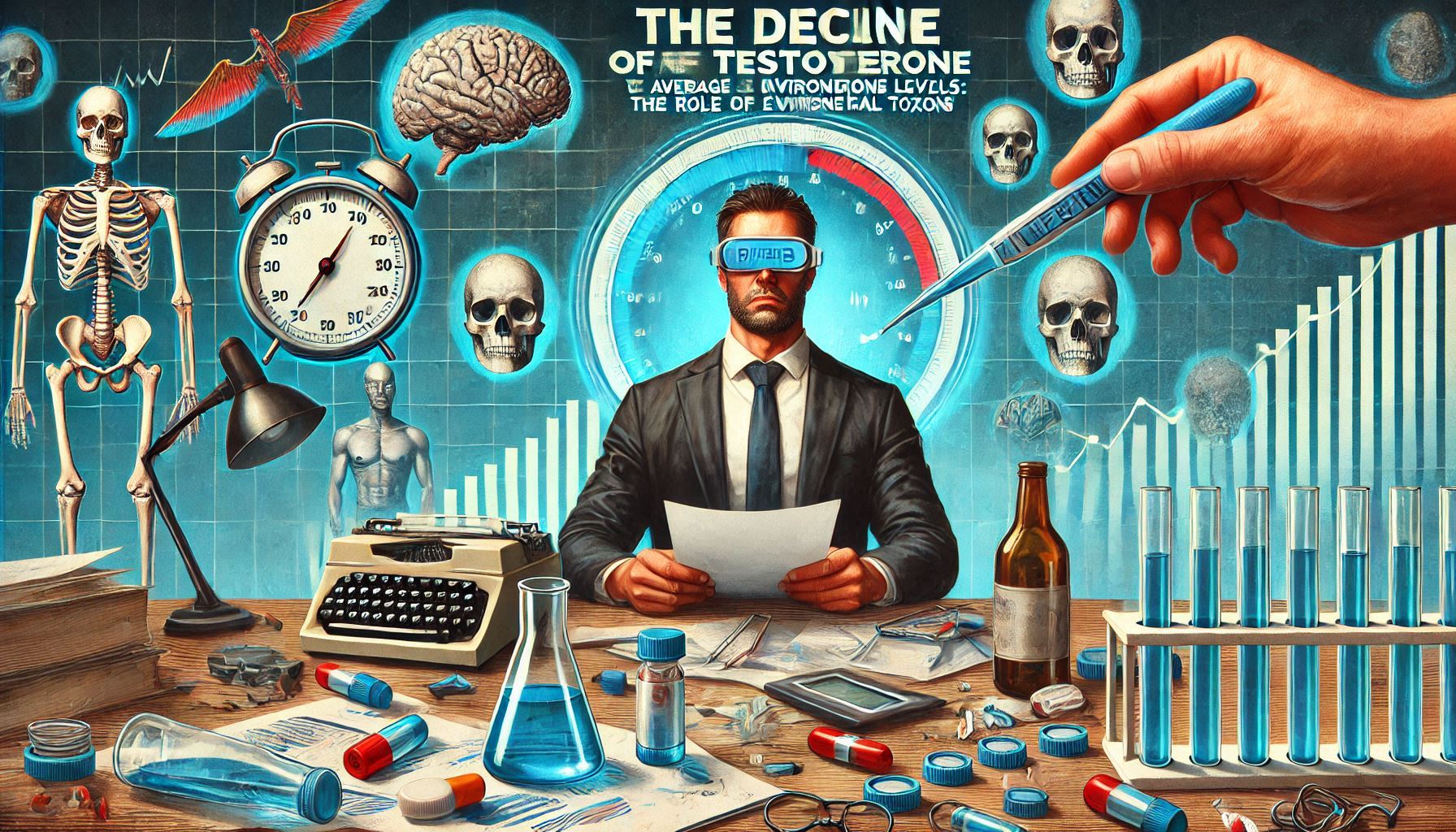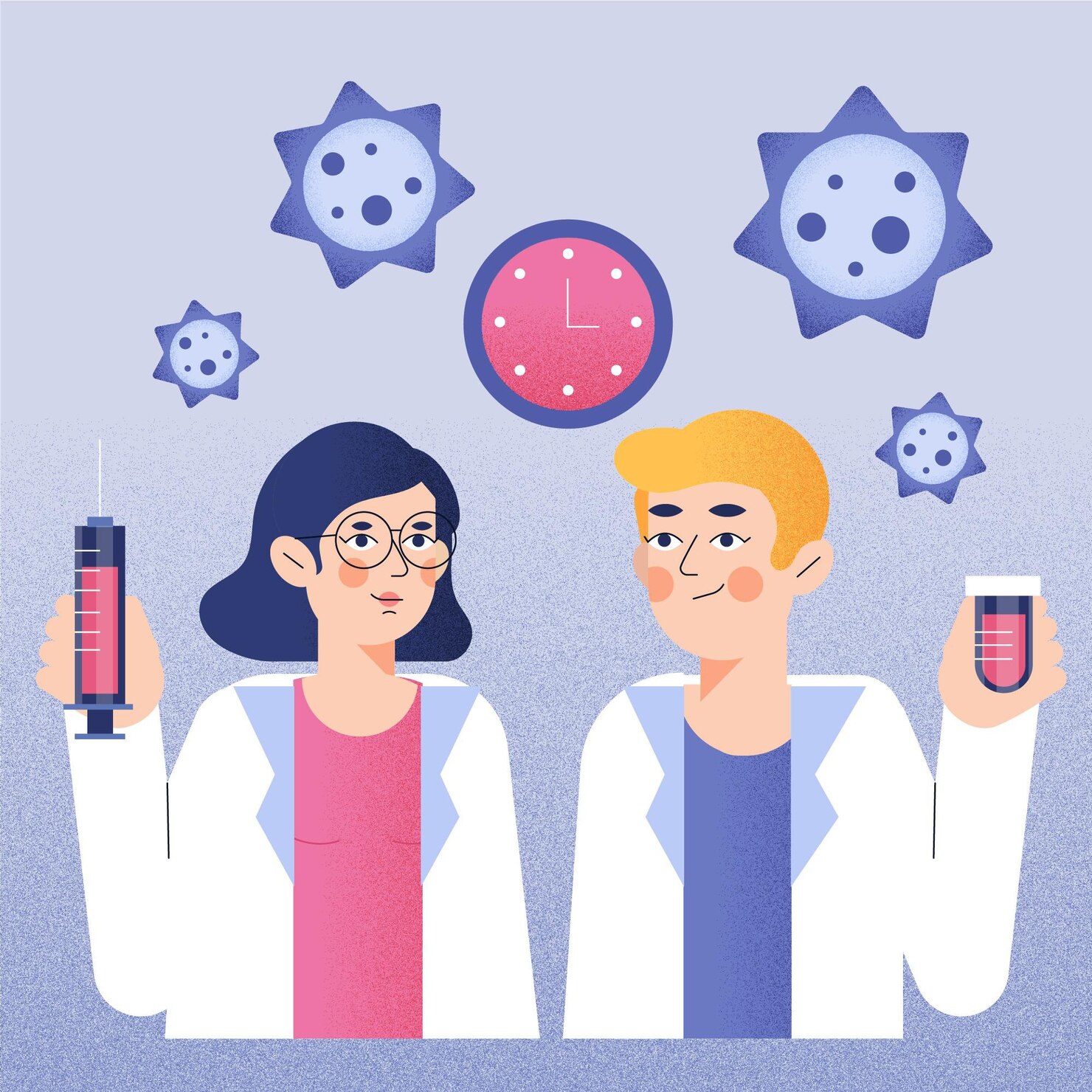Over the last several decades, there has been a significant decline in average testosterone levels among men. This decline has sparked growing concern in the medical community and among researchers. Studies indicate that men today have significantly lower testosterone levels than their grandfathers did at the same age. For instance, research shows that since the 1970s, testosterone levels have been decreasing at a rate of about 1% per year. What’s even more alarming is that this decline is affecting younger generations, with men in their 20s and 30s showing testosterone levels comparable to those of middle-aged men in the past.
So, why is this happening? While aging, lifestyle factors, and obesity are commonly cited causes, a deeper look reveals that environmental factors, including exposure to toxins, heavy metals, and microplastics, play a major role in this downward trend. These pollutants, many of which have been introduced since the mid-20th century, have had a cumulative effect on hormone health. This article explores the relationship between testosterone decline and environmental toxins and offers practical strategies to mitigate these effects.
The Evidence: Declining Testosterone Levels Over Generations
Researchers have identified a consistent decline in testosterone levels among men across multiple generations. A landmark study published in the Journal of Clinical Endocrinology & Metabolism found that men’s testosterone levels have dropped by as much as 25% over the last 40 years. This means that a 60-year-old man in 1980 had significantly higher testosterone levels than a 60-year-old man in 2020.
The decline is not limited to older men; younger men are experiencing lower testosterone levels at unprecedented rates. Studies suggest that men born in the 1980s and 1990s have lower testosterone levels than those born in the 1950s and 1960s. This decline is particularly concerning because testosterone is crucial for male health, affecting everything from muscle mass and bone density to mood and energy levels.
Environmental Toxins: The Silent Culprits
1. Endocrine Disruptors
Endocrine disruptors are chemicals that interfere with the body’s hormone systems. These substances can mimic or block hormones, leading to imbalances. Many of these disruptors were introduced in the 1950s and are now pervasive in our environment. Examples include:
- Bisphenol A (BPA): Found in plastics, food containers, and receipts, BPA can interfere with testosterone production.
- Phthalates: Commonly found in personal care products, plastics, and toys, phthalates are known to reduce testosterone levels.
- Parabens: Present in cosmetics and preservatives, parabens can disrupt hormonal balance.
2. Heavy Metals
Heavy metals like lead, mercury, and cadmium have toxic effects on hormone production. These metals have accumulated in the environment due to industrial activities, mining, and the widespread use of leaded gasoline until the late 20th century.
- Lead: Exposure to lead, often through contaminated water or old paint, is linked to reduced testosterone levels and infertility.
- Mercury: Found in seafood and industrial emissions, mercury disrupts the endocrine system and lowers testosterone production.
- Cadmium: Present in cigarette smoke and industrial pollutants, cadmium has been shown to reduce testosterone levels and impair reproductive health.
3. Microplastics
Microplastics are tiny plastic particles that have invaded every corner of the environment, including the air, water, and food supply. They are derived from the breakdown of plastic products, many of which originated in the 1950s when plastic use began to soar.
These particles contain hormone-disrupting chemicals like BPA and phthalates. When ingested or inhaled, microplastics can accumulate in the body, interfering with testosterone production and overall endocrine function.
How These Toxins Impact Testosterone
Toxins, heavy metals, and microplastics primarily affect testosterone levels in the following ways:
- Disrupting Hormone Synthesis: Many toxins interfere with the body’s ability to produce testosterone by affecting the testes or the hypothalamus-pituitary-gonadal (HPG) axis, which regulates hormone production.
- Mimicking Estrogen: Chemicals like BPA act as synthetic estrogens, leading to hormonal imbalances and reducing testosterone levels.
- Inflammation and Oxidative Stress: Heavy metals and microplastics cause oxidative stress, which damages cells in the testes and reduces testosterone synthesis.
- Impairing Fertility: These substances can damage sperm production and quality, contributing to overall reproductive health decline.
Steps to Eliminate Toxins and Improve Testosterone Levels
While it’s impossible to avoid environmental toxins completely, there are effective strategies to reduce exposure and support healthy testosterone levels.
1. Reduce Plastic Use
- Avoid Plastic Containers: Use glass, stainless steel, or ceramic containers for food and drinks.
- Limit Processed Foods: Many packaged foods are exposed to plastic and contain additives that disrupt hormones.
- Filter Water: Use a high-quality water filter to remove microplastics and contaminants.
2. Minimize Heavy Metal Exposure
- Eat Clean Seafood: Choose fish with low mercury content like salmon, sardines, and trout. Avoid high-mercury fish like swordfish and king mackerel.
- Test for Contaminants: Check for lead in your home’s water supply, especially if you live in an older building.
- Avoid Cigarette Smoke: Smoking introduces heavy metals like cadmium into your body.
3. Detoxify Your Body
- Support Liver Health: Eat foods rich in antioxidants like berries, leafy greens, and cruciferous vegetables (broccoli, kale, cauliflower).
- Stay Hydrated: Drink plenty of water to help flush out toxins.
- Consider Chelation Therapy: For heavy metal detoxification, consult a healthcare professional about chelation therapy options.
4. Optimize Nutrition and Lifestyle
- Balanced Diet: Include healthy fats, lean proteins, and fiber-rich vegetables to support hormone health.
- Exercise Regularly: Strength training and high-intensity interval training (HIIT) can boost testosterone levels.
- Adequate Sleep: Aim for 7-8 hours of quality sleep per night to promote hormonal balance.
Conclusion
The decline in average testosterone levels over the past several decades is a concerning trend with wide-ranging implications for men’s health. Environmental toxins, heavy metals, and microplastics, many of which became prevalent in the 1950s, have played a significant role in this decline.
By taking steps to reduce exposure to these harmful substances and adopting a healthy lifestyle, men can support their testosterone levels and overall well-being. Awareness and action are key to mitigating the impact of these environmental factors and ensuring a healthier future for the next generations.
FAQs
1. Why are testosterone levels declining in men?
Testosterone levels are declining due to a combination of factors, including aging, obesity, lifestyle changes, and exposure to environmental toxins, heavy metals, and microplastics.
2. How do endocrine disruptors affect testosterone?
Endocrine disruptors mimic or block hormones, interfering with testosterone synthesis and balance, which can lead to lower testosterone levels.
3. Can reducing plastic use improve testosterone levels?
Yes, reducing plastic use can lower your exposure to endocrine-disrupting chemicals like BPA and phthalates, which may help improve testosterone levels.
4. How can I detox from heavy metals?
Supporting liver health, drinking plenty of water, and consulting a healthcare provider about chelation therapy are effective ways to detox from heavy metals.
5. What lifestyle changes can boost testosterone?
Regular exercise, a balanced diet, adequate sleep, and stress management can naturally boost testosterone levels.








